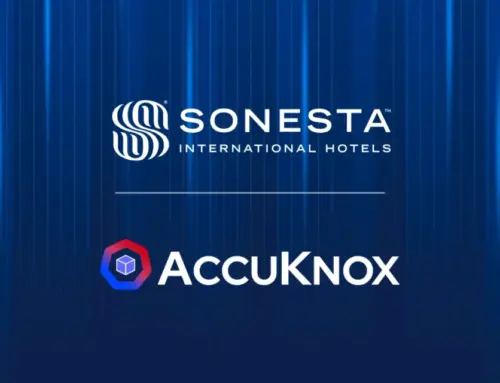
Lighthouse Studio RCE Vulnerability Let Attackers Gain Access to Hosting Servers
Unmasking CVE-2025-34300: Lighthouse Studio’s Critical RCE Vulnerability
A silent giant in the market research landscape, Sawtooth Software’s Lighthouse Studio, faces a critical security reckoning. A remote code execution (RCE) vulnerability, officially designated CVE-2025-34300, has been uncovered, posing a significant threat to thousands of hosting servers. This isn’t just another security alert; it’s a stark reminder that even widely deployed, niche software can harbor profound weaknesses, potentially laying bare entire IT infrastructures to attackers.
The Heart of the Vulnerability: Perl CGI Scripts
The core of CVE-2025-34300 lies within Lighthouse Studio’s web-based survey functions, specifically impacting its Perl CGI scripts. These scripts, responsible for rendering and processing online surveys, are the conduits through which attackers can achieve complete server compromise. The danger here is multifaceted: the software’s widespread use, coupled with its relatively low public profile, means many organizations might be running vulnerable instances without awareness, making them prime targets for malicious actors seeking an easy entry point.
The exploit potential is alarming. An attacker, requiring minimal technical prowess beyond understanding the vulnerability, could leverage this flaw to:
- Execute arbitrary code on the hosting server.
- Gain unauthorized access to sensitive data stored on the server.
- Install malware or ransomware.
- Use the compromised server as a pivot point for further network infiltration.
- Potentially disrupt survey operations, leading to significant data loss or integrity issues.
Impact Assessment: Thousands of Servers at Risk
The discovery of this critical RCE vulnerability in Lighthouse Studio, a platform utilized by numerous organizations for data collection and analysis, carries severe implications. The “remote code execution” aspect is particularly concerning because it signifies the highest level of threat, allowing attackers to run their own malicious code remotely on the target system. This bypasses many traditional security controls and can lead to immediate and complete takeover of the affected server. Given Lighthouse Studio’s broad, albeit often unnoticed, deployment, the potential attack surface is vast, encompassing a significant number of web servers globally.
Remediation Actions and Mitigation Strategies
Immediate action is crucial for all organizations deploying or utilizing Lighthouse Studio for their survey needs. Addressing CVE-2025-34300 requires a multi-pronged approach:
- Patch Immediately: The most critical step is to apply any official security patches released by Sawtooth Software. Monitor their official channels and support portals for updates pertaining to CVE-2025-34300.
- Isolate Lighthouse Studio Deployments: If immediate patching isn’t feasible, or as an added layer of defense, isolate Lighthouse Studio instances. This involves segregating the software onto its own dedicated server or within a tightly controlled network segment, limiting its ability to interact with other critical systems.
- Implement Web Application Firewalls (WAFs): A robust WAF can help detect and block malicious requests targeting known vulnerabilities in web applications, including those aimed at exploiting RCE flaws in Perl CGI scripts. Configure your WAF to specifically monitor and filter traffic to and from Lighthouse Studio.
- Principle of Least Privilege: Ensure that the user account running the Lighthouse Studio application and its associated Perl CGI scripts operates with the absolute minimum necessary permissions. This can limit the damage an attacker can inflict even if they successfully exploit the vulnerability.
- Regular Security Audits: Conduct frequent security audits and penetration tests specifically targeting your web applications and their underlying infrastructure. This proactive approach can help identify and address vulnerabilities before they are exploited.
- Monitor for Anomalous Activity: Implement comprehensive logging and monitoring solutions. Pay close attention to unusual outbound connections, unexpected file modifications, script executions, or changes in user accounts on servers hosting Lighthouse Studio.
Tools for Detection and Prevention
Leveraging the right tools can significantly bolster your defense against vulnerabilities like CVE-2025-34300. Below is a table of relevant tools:
| Tool Name | Purpose | Link |
|---|---|---|
| OpenVAS / Greenbone Vulnerability Management | Comprehensive vulnerability scanning and management for network and web applications. | https://www.greenbone.net/ |
| OWASP ZAP (Zed Attack Proxy) | Free and open-source web application security scanner for finding vulnerabilities during development and testing. | https://www.zaproxy.org/ |
| Nessus | Industry-leading vulnerability assessment solution capable of identifying RCE and other critical flaws. | https://www.tenable.com/products/nessus |
| ModSecurity | An open-source Web Application Firewall (WAF) that provides protection against a wide range of web attacks. | https://modsecurity.org/ |
Protecting Your Perimeter
The discovery of CVE-2025-34300 in Lighthouse Studio serves as a critical reminder: comprehensive cybersecurity extends beyond the commonly known, high-profile applications. Vigilance, timely patching, and robust defensive layers are paramount to protecting your organization’s digital assets. Identify all instances of Lighthouse Studio within your infrastructure, apply the necessary patches without delay, and implement the recommended mitigation strategies to safeguard against potential server compromise and data breaches.





